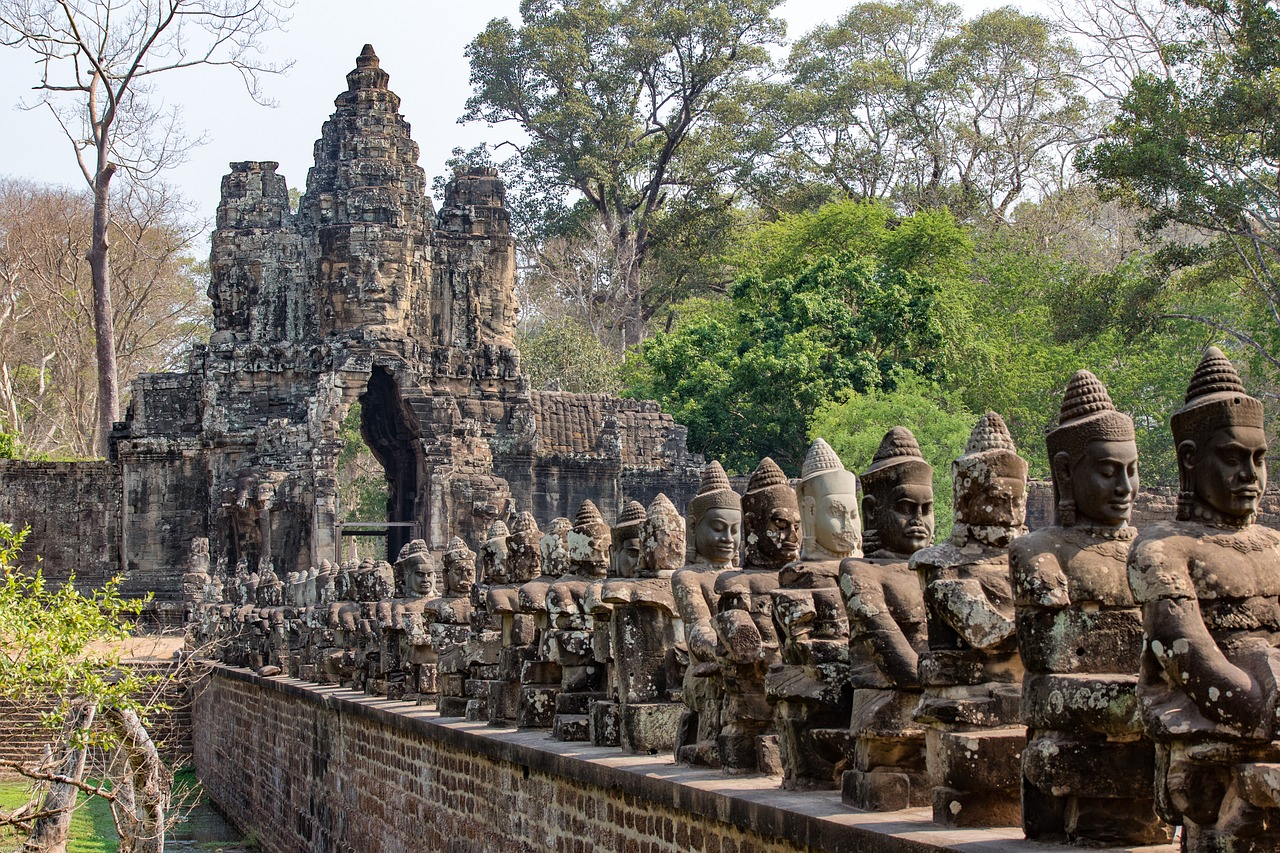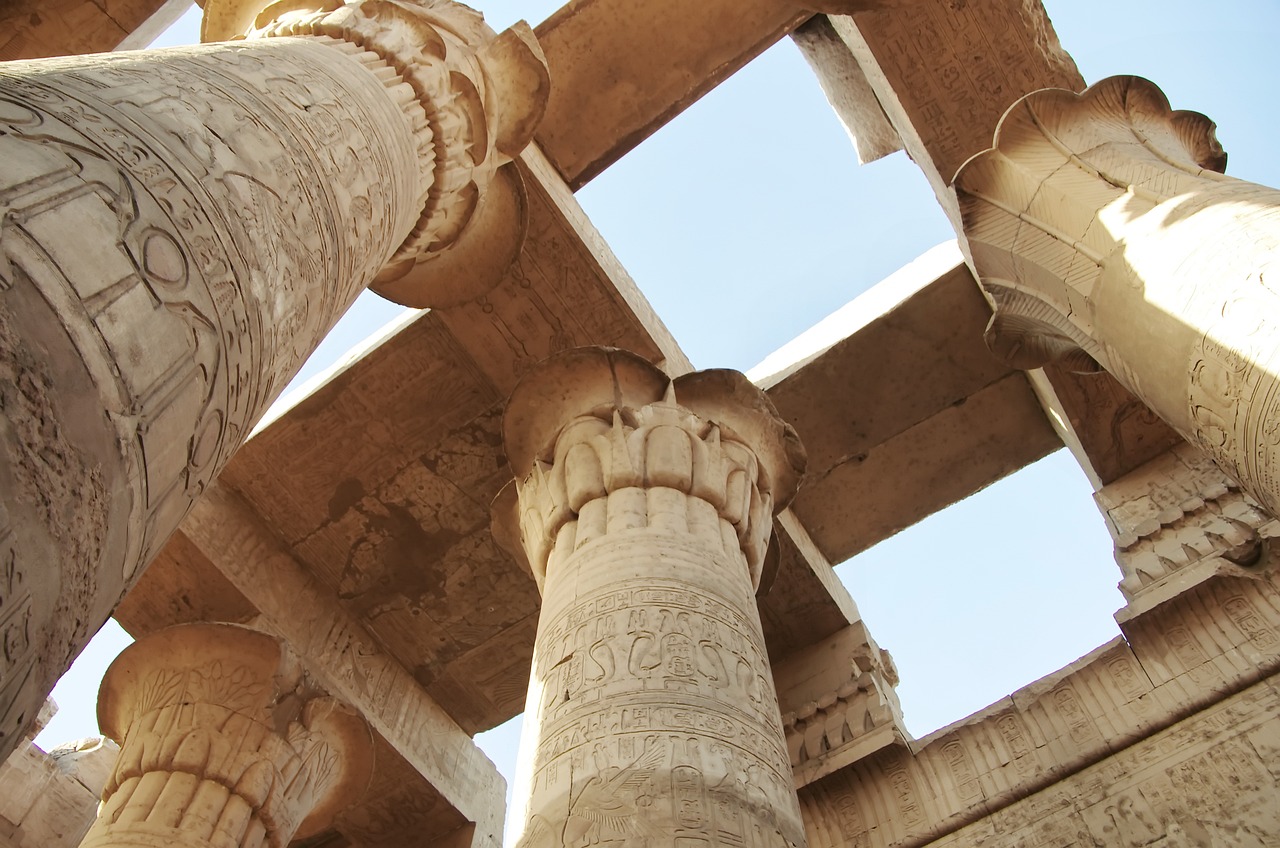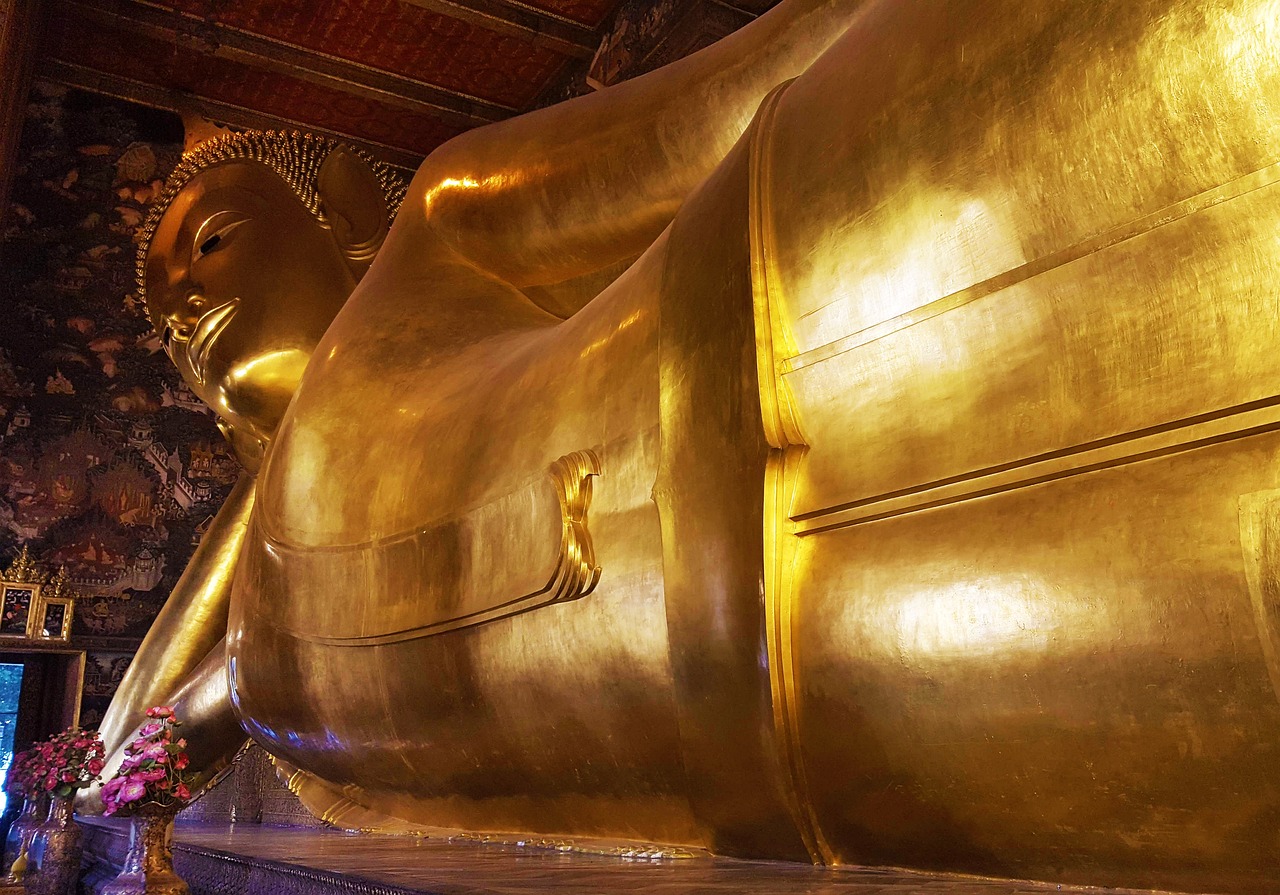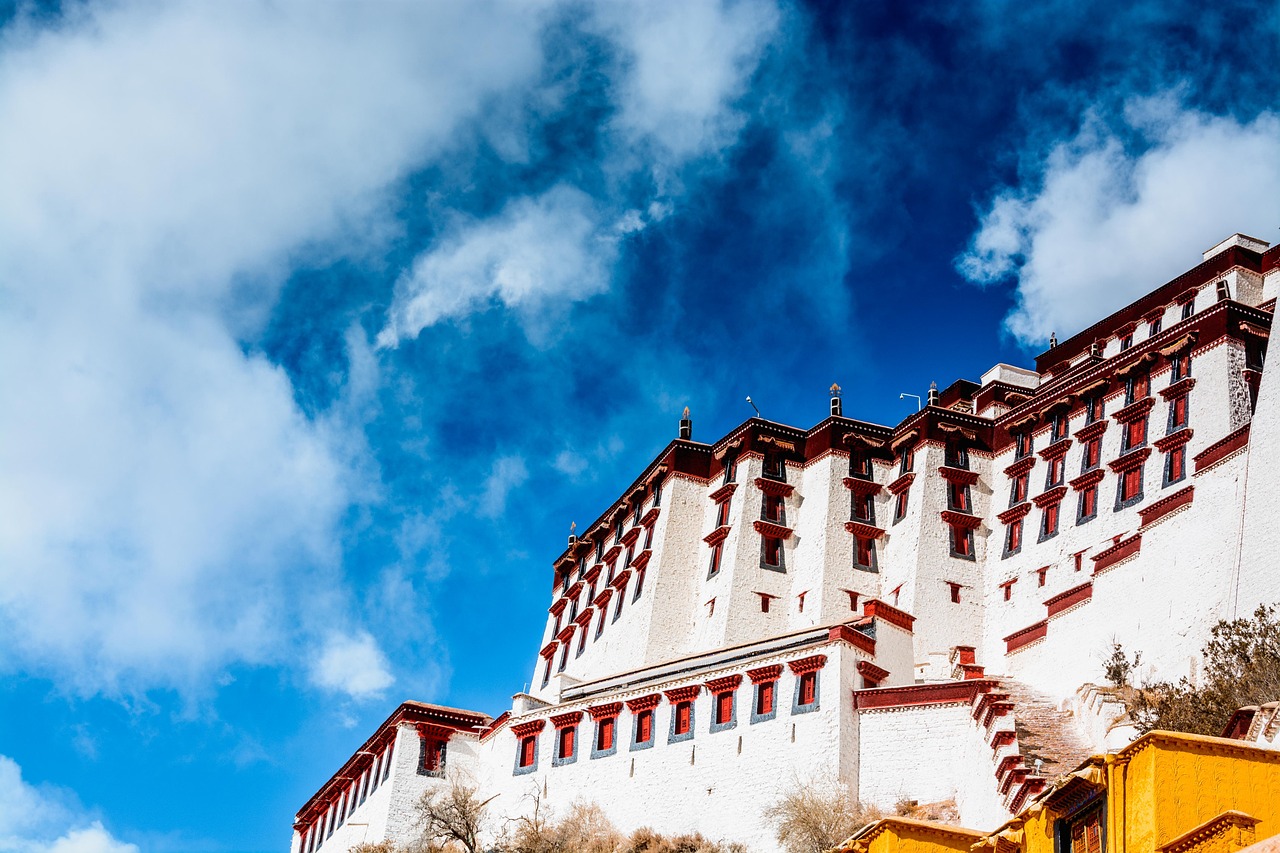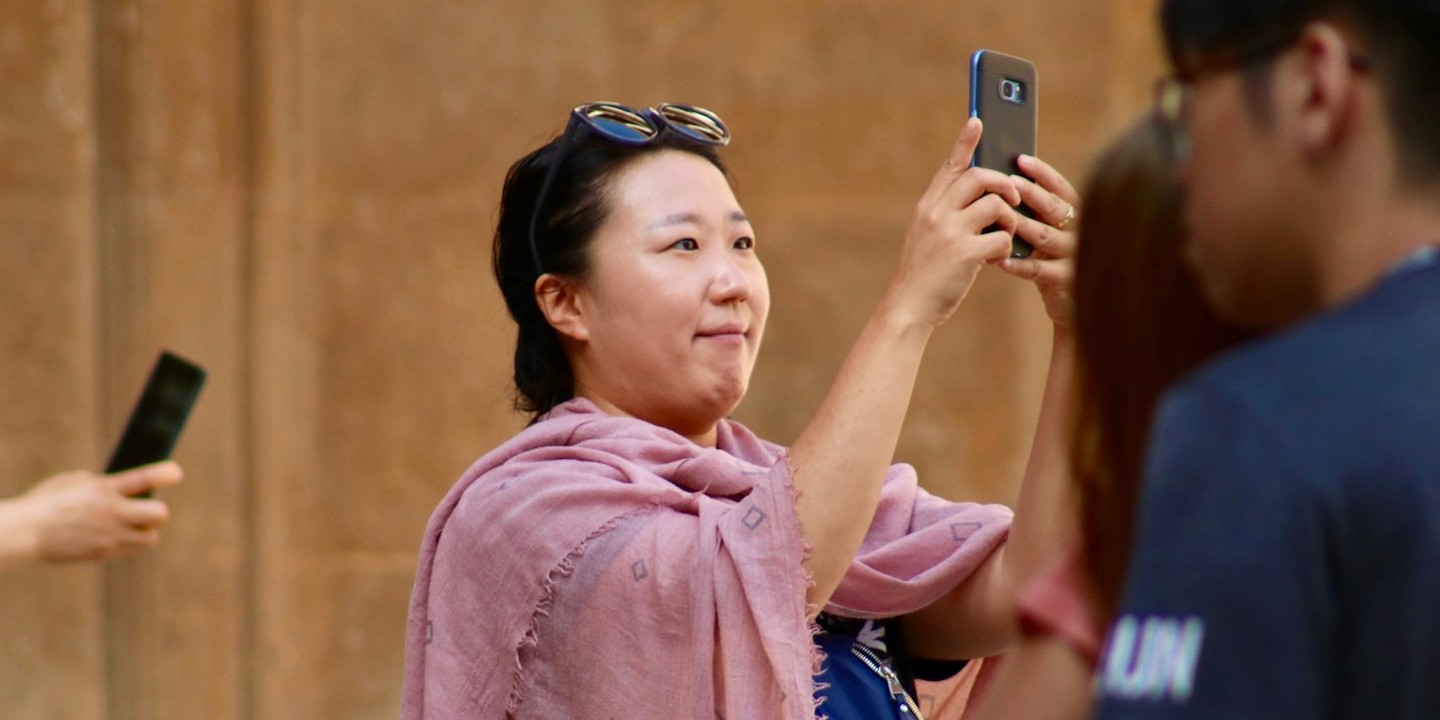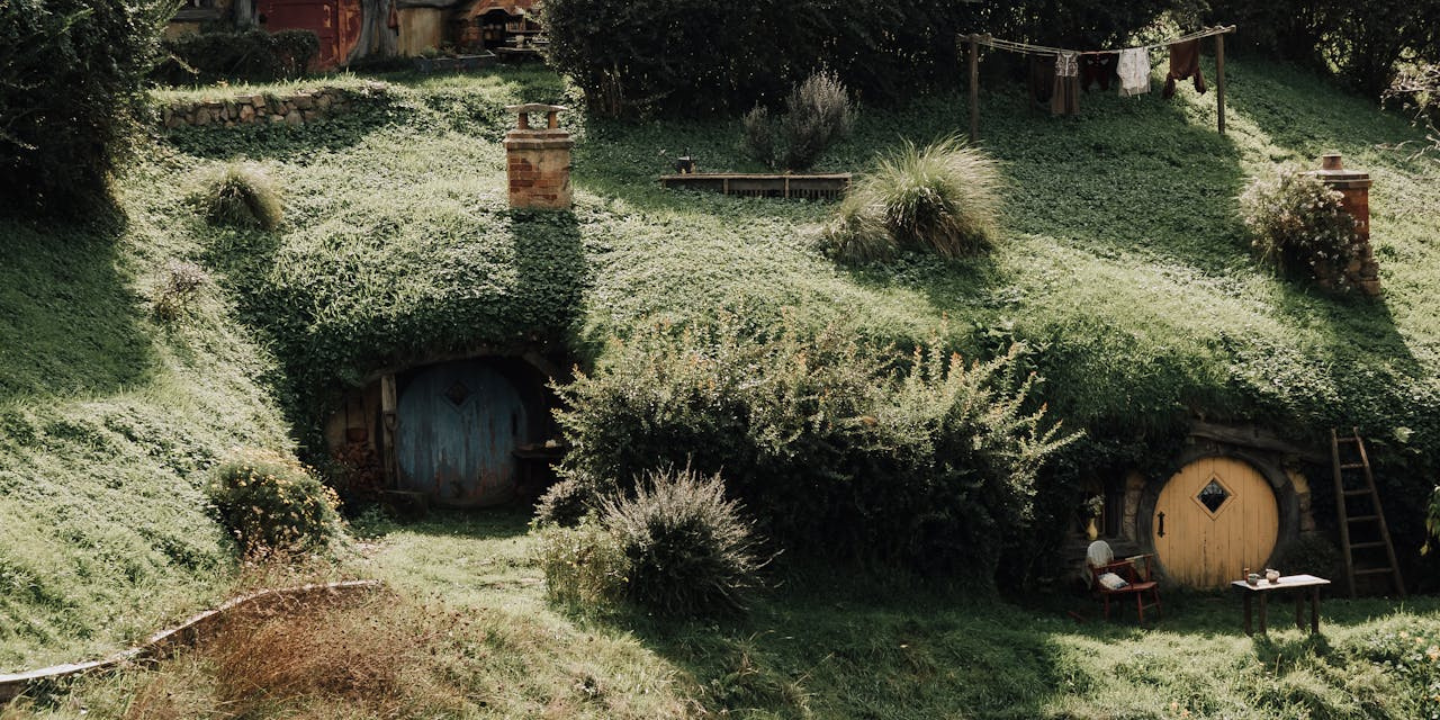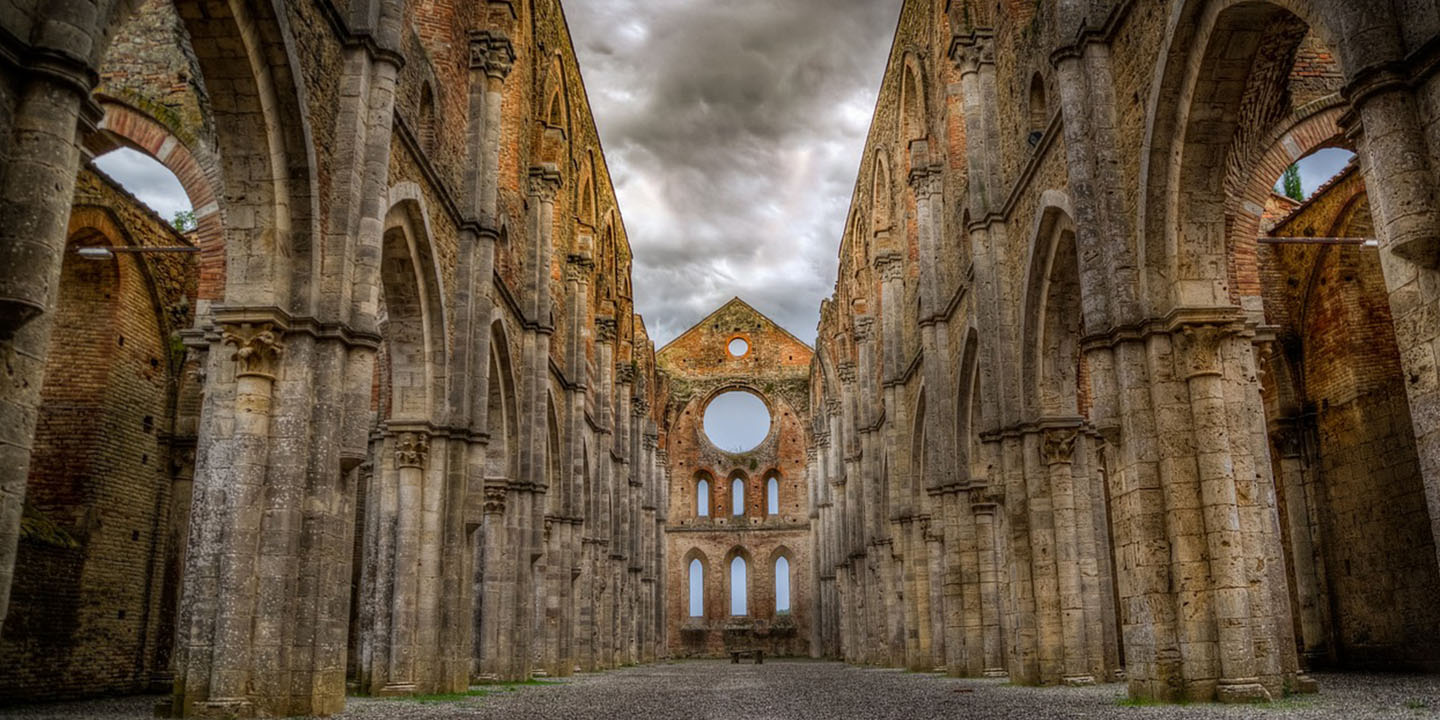Welcome, wanderers of the world, to a spiritual voyage through some of the most breathtaking temples the Earth has to offer. Temples, with their awe-inspiring architecture, intricate details, and serene surroundings, have been the epicentre of faith, culture, and history for centuries. Here we explore 19 of the most beautiful temples that grace our planet, each one a testament to human devotion and artistic brilliance. Get ready to be mesmerized by the ethereal beauty and profound tranquillity that awaits you in these sacred abodes.
1. Angkor Wat, Cambodia: The Celestial City
Angkor Wat rises like a celestial city amidst the jungles of Cambodia. The world's largest religious monument, this magnificent temple complex is an architectural marvel, with its intricate carvings, towers, and reflecting pools leaving visitors in awe of the ancient Khmer civilization. Originally built as a Hindu temple, it was later converted to a Buddhist temple, and now it is described as a Hindu-Buddhist temple. The Guinness Book of World Records considers it the largest religious structure in the world!
2. Taj Mahal, India: Love Etched in Marble
A symbol of eternal love, the Taj Mahal in Agra, India, is a white marble masterpiece. Incorporating a blend of Indian, Islamic, and Persian styles, its symmetrical beauty, reflecting pool, and lush gardens create a mesmerizing setting that has enchanted visitors for centuries. Its grand architecture, design, and ability to withstand time makes it one of UNESCO's World Heritage sites, so that's saying something!
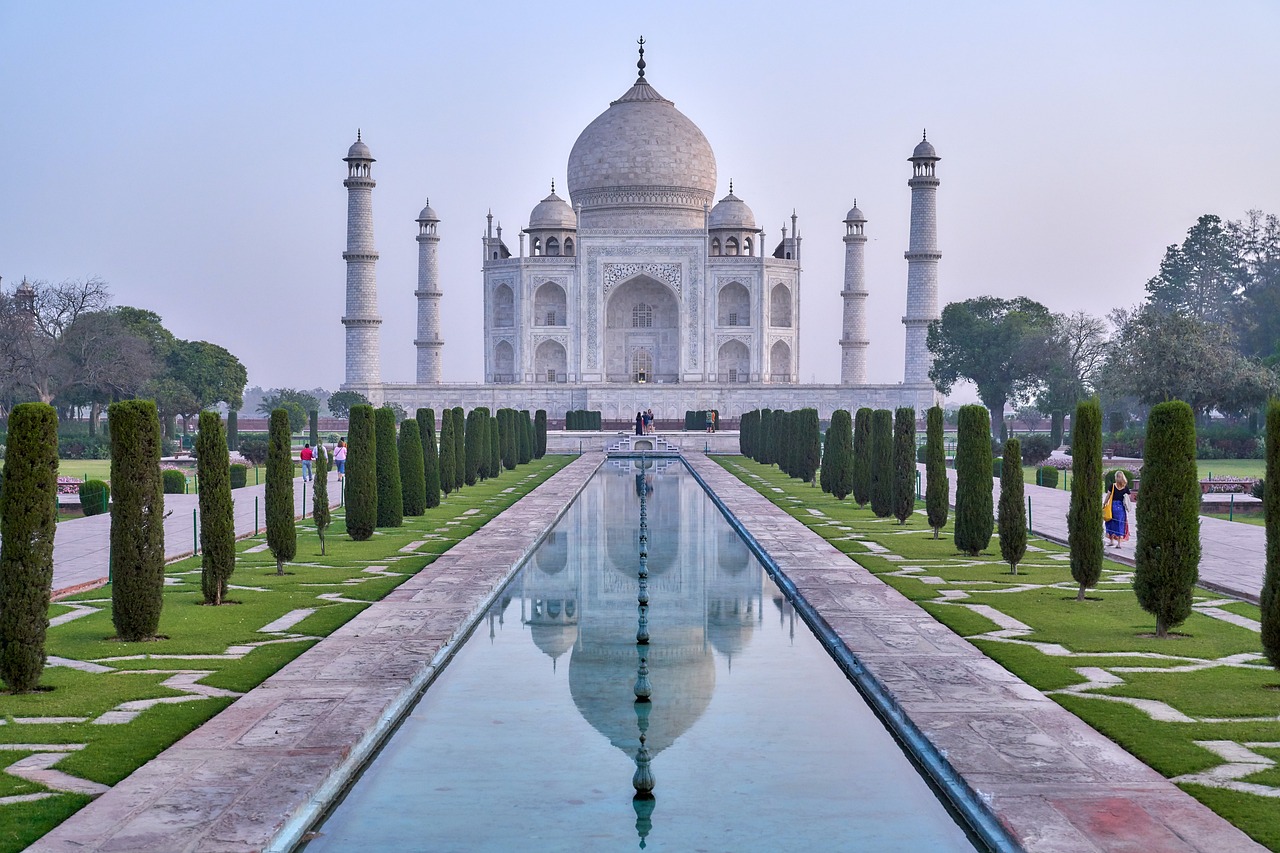 Image by يسرا توكل from Pixabay
Image by يسرا توكل from Pixabay
3. Borobudur, Indonesia: A Spiritual Mandala
Hidden on the island of Java, Borobudur is a colossal Buddhist temple and an exquisite mandala. Its nine stacked platforms are adorned with 2,672 relief panels and 504 Buddha statues, offering a profound journey through Buddhist teachings. The temple displays both Hindu and Buddhist symbols and mythology. Presumably finished in 850 CE, the temple was covered in volcanic ash until its discovery by the English in 1814.
A team of Dutch archaeologists began restoring the site in 1907, and in 1991 it was declared a UNESCO World Heritage site.
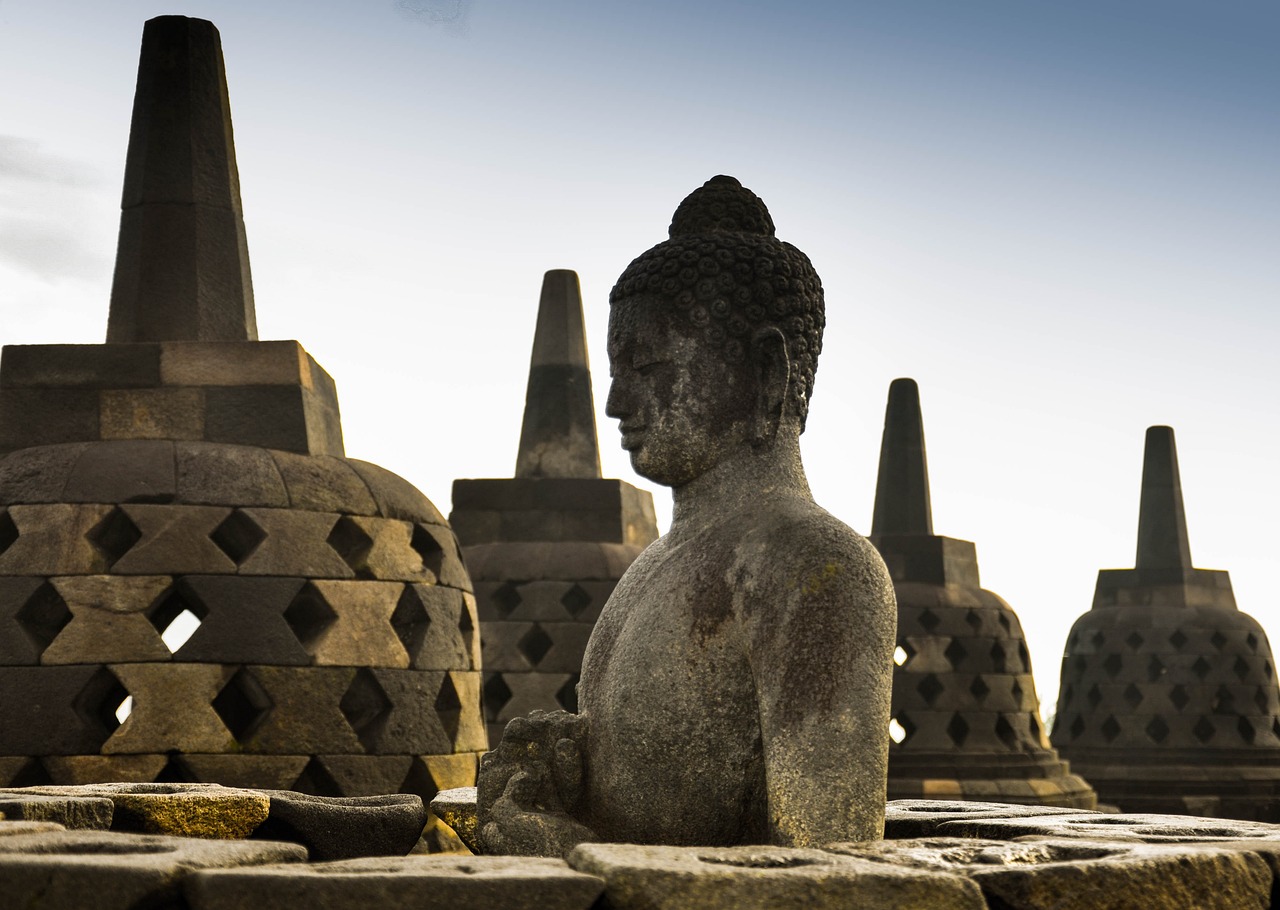 Image by Deepu Joseph from Pixabay
Image by Deepu Joseph from Pixabay
4. The Parthenon, Greece: Where Gods Reside
The Parthenon graces the Athenian Acropolis, a testament to ancient Greek civilization. Dedicated to the goddess Athena, this Doric temple is an architectural marvel that stands as an eternal symbol of Ancient Greece, democracy, and the start of Western Civilization. While technically a temple in the architectural sense, scholars believe the structure did not have any religious or cult function.
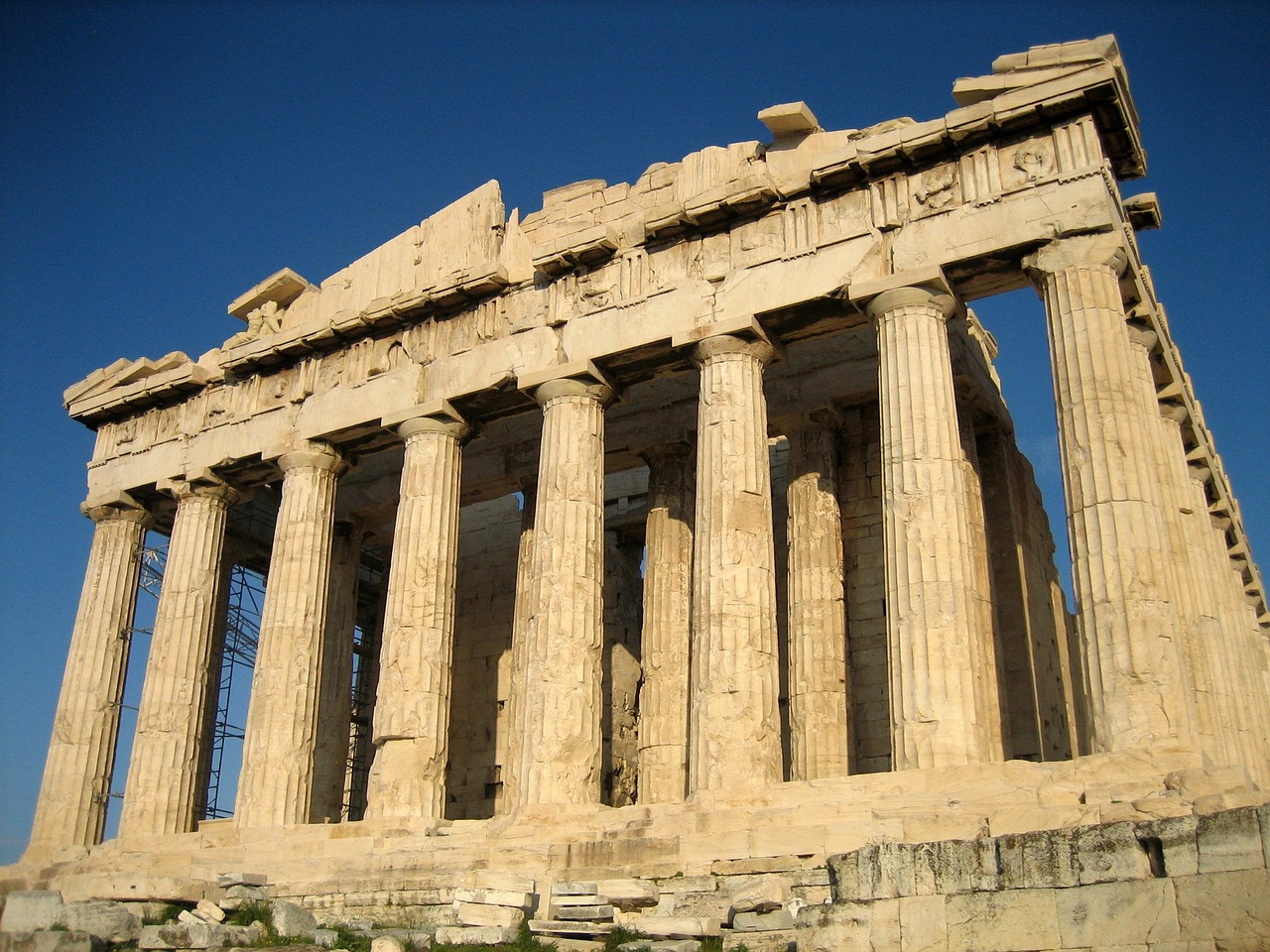 Image by WikiImages from Pixabay
Image by WikiImages from Pixabay
5. Golden Temple, India: The Glorious Sikh Sanctum
The Golden Temple, or Harmandir Sahib, in Amritsar, India, is a sacred haven for Sikhs. In fact, it's considered one of the holiest places in Sikhism. Its golden facade beautifully reflects in the surrounding Amrit Sarovar, exuding a divine aura that touches the soul of every visitor. The temple is described as having Indo-Islamic architectural influence, which is evident in the arabesque floral designs on the marble wall panels. Every day, several ceremonies are performed as per the Sikh tradition.
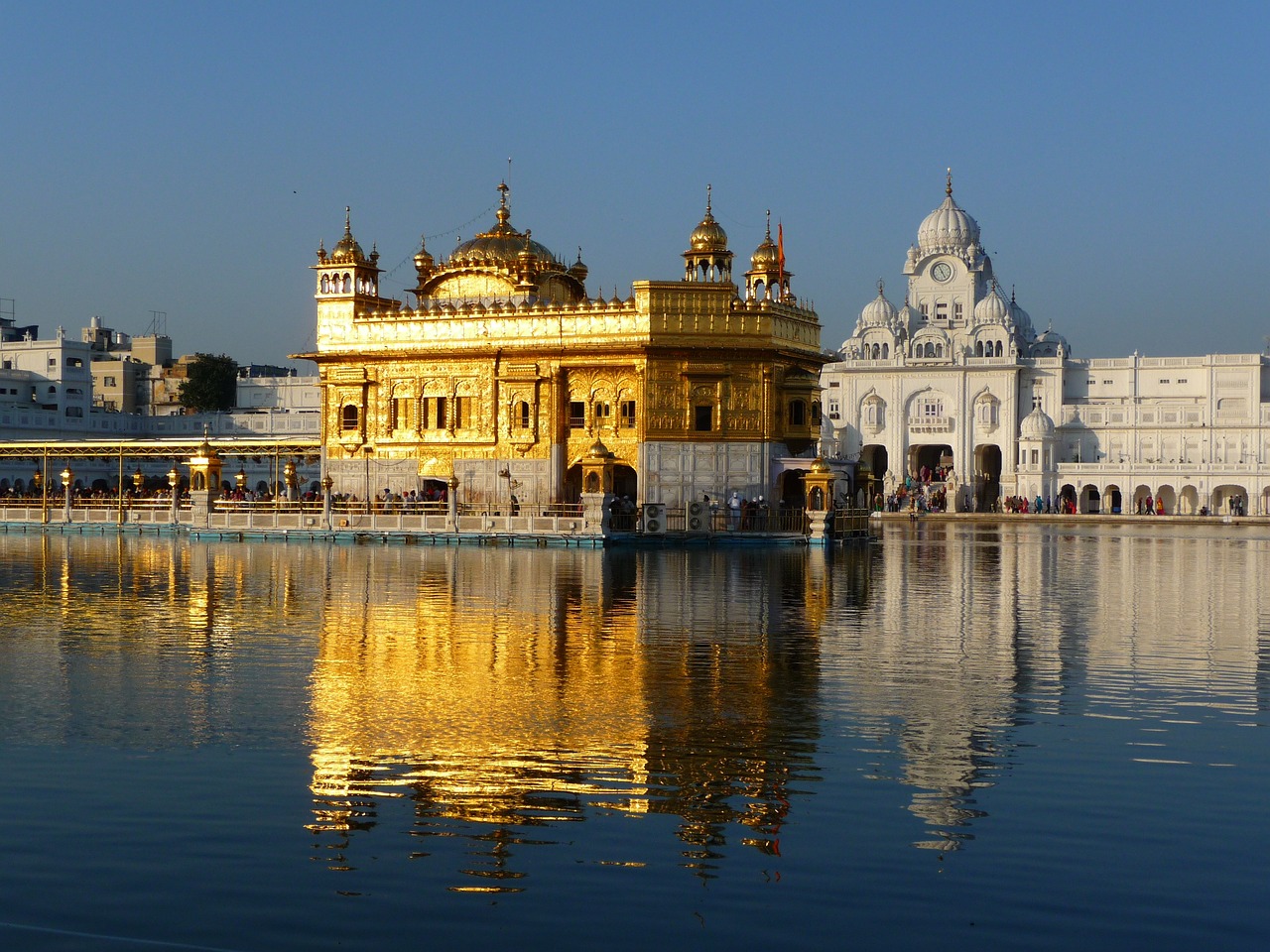 Image by Lionel Borie from Pixabay
Image by Lionel Borie from Pixabay
6. Shwedagon Pagoda, Myanmar: A Golden Beacon
Dominating the skyline of Yangon, Shwedagon Pagoda is a gilded wonder. The 99-meter stupa is adorned with thousands of diamonds and gems, creating a celestial sight at sunset when the temple glows in hues of gold.
It's considered Burma's most important Buddhist pilgrimage site. It's also the oldest pagoda in Burma, dating back around 2,500 years.
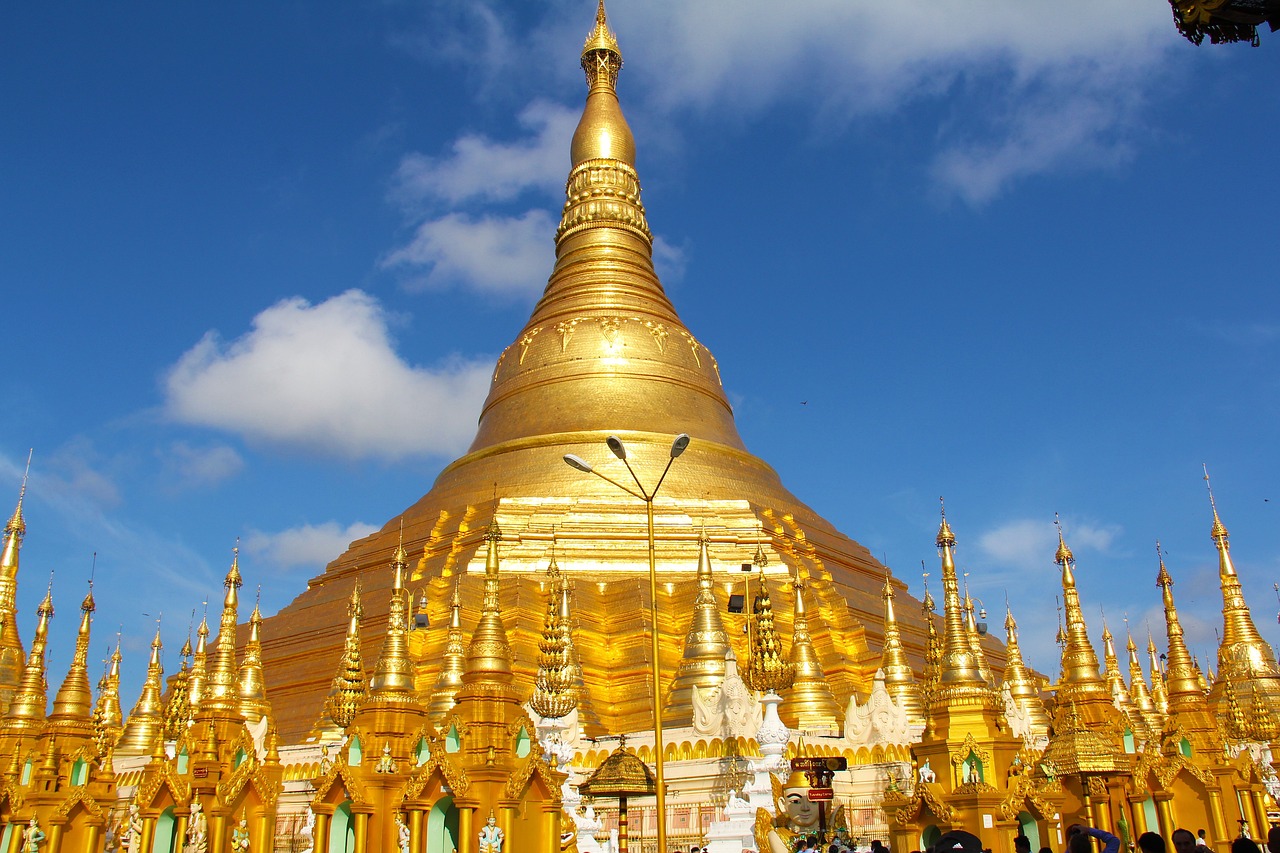 Image by Sharon Ang from Pixabay
Image by Sharon Ang from Pixabay
7. Hagia Sophia, Turkey: East Meets West
An architectural gem in Istanbul, Hagia Sophia has a storied past. Originally built as a Byzantine cathedral, it later became a mosque and now stands as a museum, blending Eastern and Western influences in its grand design. The Hagia Sophia was built in about six years, being completed in 537 CE, which is remarkably fast for the time. The art and mosaics that are features all over the temple are unmatched, and the colours and techniques showcase the beautiful Byzantine style.
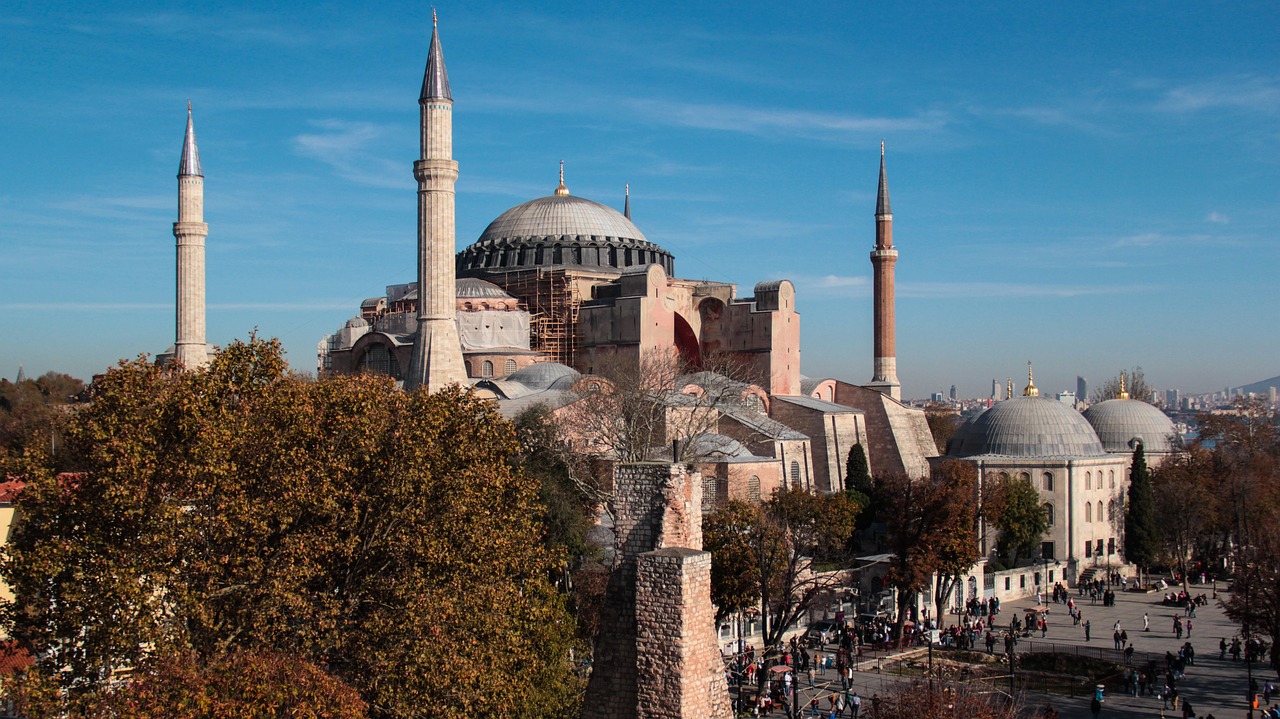 Image by Niek Verlaan from Pixabay
Image by Niek Verlaan from Pixabay
8. Meenakshi Temple, India: A Marvel of South India
Meenakshi Temple in Madurai, India, is a spectacular testament to Dravidian architecture. Adorned with colourful sculptures of gods and goddesses, it stands as a living example of the region's rich cultural heritage. The temple dates back as far as the 4th century. The towers are some of the most elaborately decorated in India. Brightly painted, they are decorated with figures of divinities, celestial beings, monster masks, guardians, and animal mounts.
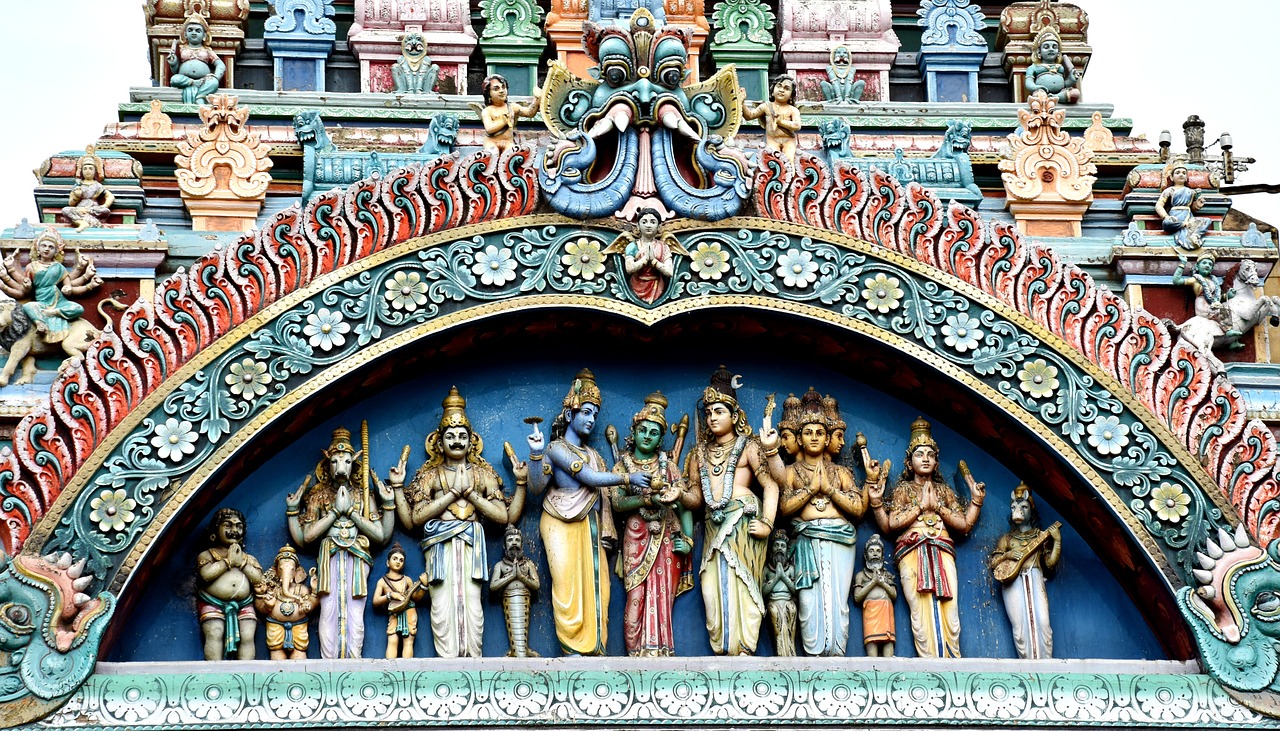 Image by Prasanna Devadas from Pixabay
Image by Prasanna Devadas from Pixabay
9. Karnak Temple, Egypt: The City of the Gods
Karnak Temple is an ancient complex in Luxor, Egypt, devoted to the worship of Amun-Ra. The complex features a number of temples, pylons, and chapels and took over 1,000 years to develop.
With its massive columns and intricate hieroglyphs, it remains a living connection to Egypt's pharaonic past. It was built as a cult temple and was dedicated to the gods Amun, Mut, and Khonsu.
10. Pura Luhur Uluwatu, Indonesia: Where Land Meets Sea
Perched atop a cliff on Bali's coastline, Pura Luhur Uluwatu offers breathtaking views of the Indian Ocean. The temple's traditional Balinese architecture and daily Kecak dance performances make it an enchanting destination. It is a Hindu temple that was built sometime in the 11th century. It is one of Bali's nine directional temples, believed to safeguard the island from evil spirits. While it is known to be a religious and spiritual landmark, it continues to also be a highly sought-after tourist attraction.
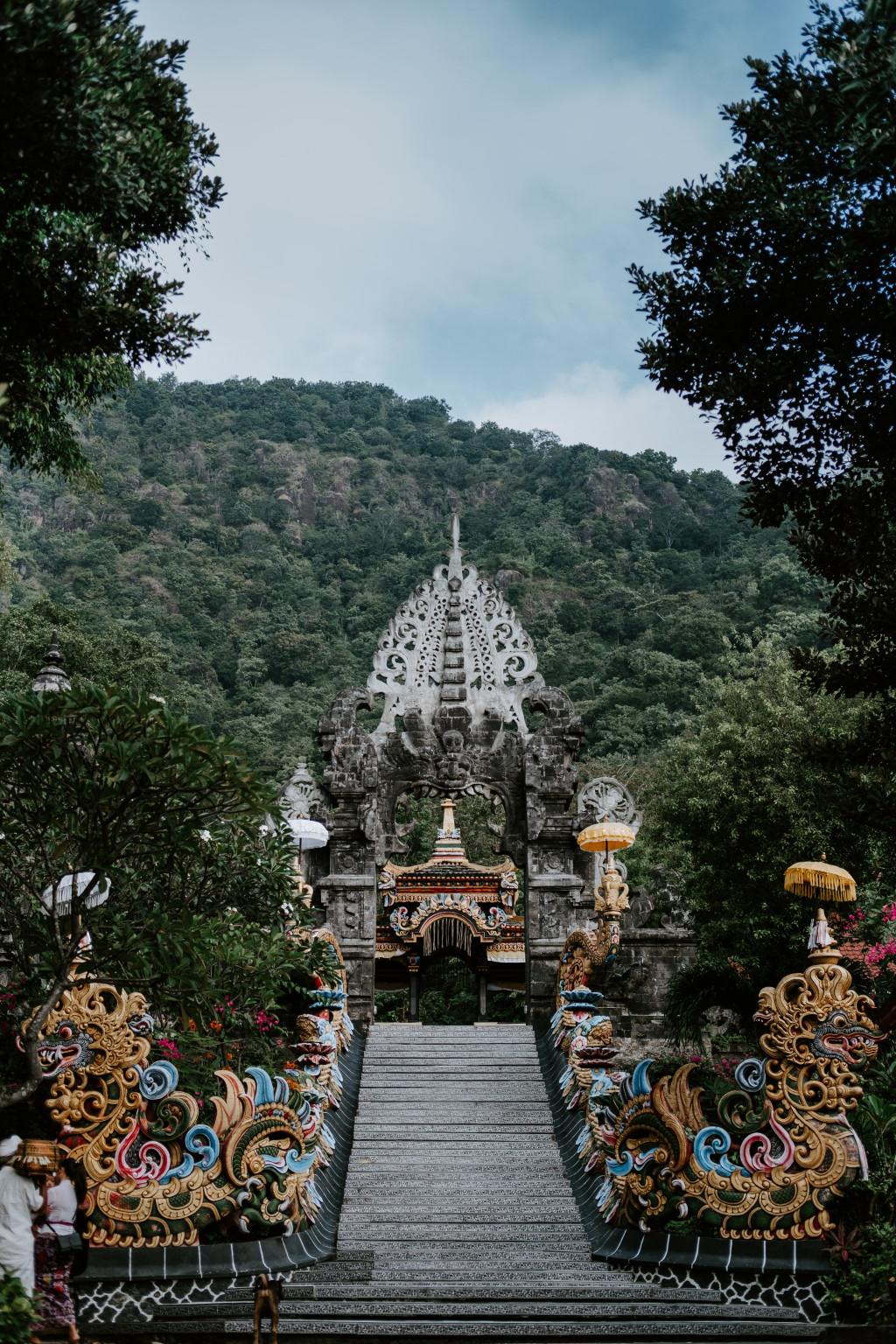 Photo by Sudharma Putra on Unsplash
Photo by Sudharma Putra on Unsplash
11. The Lotus Temple, India: A Baha'i Haven
In New Delhi, The Lotus Temple welcomes people of all faiths to meditate and find solace. Its lotus-shaped structure, surrounded by pools and gardens, makes it a serene oasis in the bustling capital. The temple complex comprises 27 independent marble “petals,” which are clustered into groups of three to form nine sides, which is significant as the number nine is believed to have mystical properties.
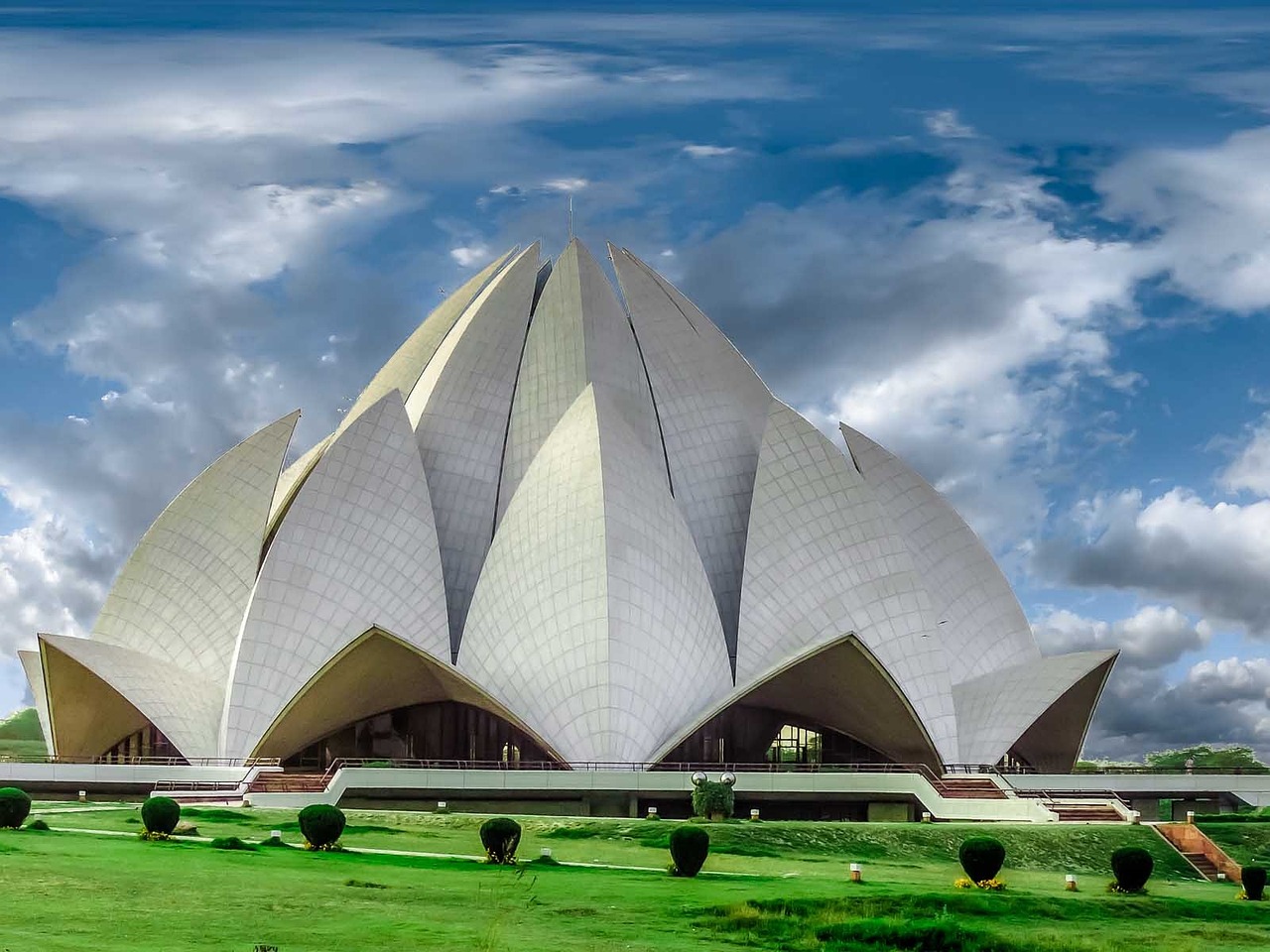 Image by harmeet9000 from Pixabay
Image by harmeet9000 from Pixabay
12. Wat Rong Khun, Thailand: The White Temple
A contemporary masterpiece in Chiang Rai, Thailand, Wat Rong Khun is a dazzling vision in white.
The white colour and pieces of glass used in the plaster make it sparkle in the sun. Its intricate design incorporates Buddhist symbols and pop culture references, making it a unique and surreal experience. Much of the temple is dedicated to depicting samsara, the Buddhist cycle of birth and death.
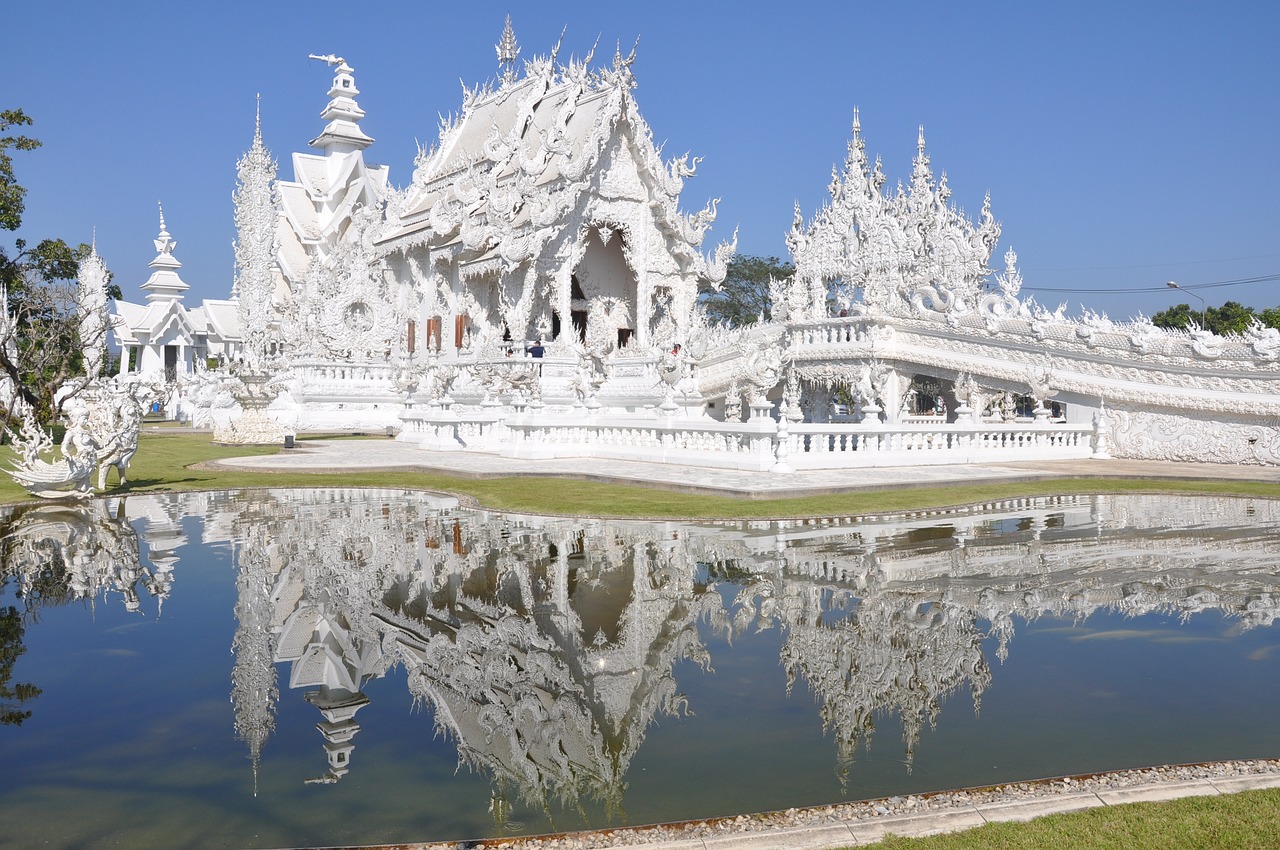 Image by Manus Chairojsumphun from Pixabay
Image by Manus Chairojsumphun from Pixabay
13. Kiyomizu-dera, Japan: Beauty Amidst Cherry Blossoms
Set amidst the cherry blossoms of Kyoto, Kiyomizu-dera is a wooden temple offering stunning views of the city. The name translates to "pure water temple," which is fitting considering it was built the site of the Otowa Waterfall. The temple was originally associated with one of the oldest schools of Buddhism. Its sacred Otowa Waterfall is said to grant wishes to those who drink from its three streams. It was declared a UNESCO site in 1994.
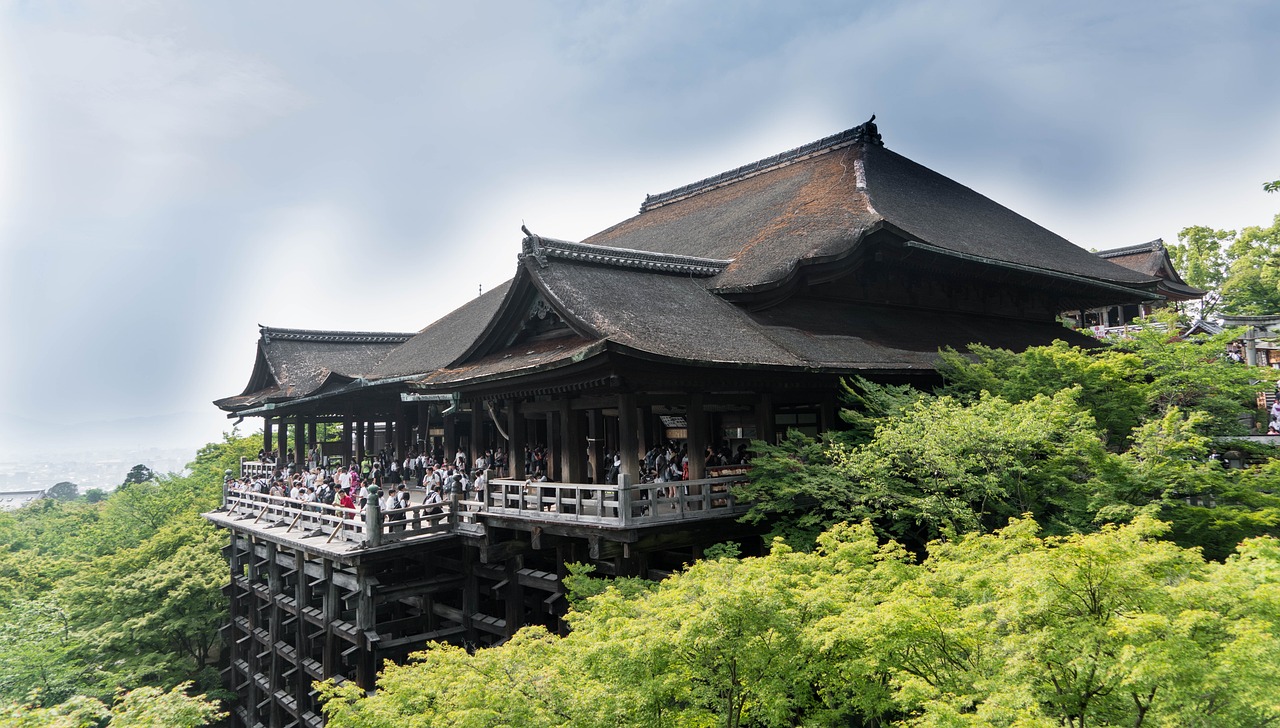 Image by Michelle Raponi from Pixabay
Image by Michelle Raponi from Pixabay
14. Rila Monastery, Bulgaria: A Balkan Gem
Founded in the 10th century by St John of Rila, a hermit canonized by the Orthodox Church, when his dwelling and tomb became a holy site and were transformed into a monastic complex. The monastery played an important role in the spiritual and social life of medieval Bulgaria. Nestled in the Rila Mountains, Rila Monastery is a UNESCO World Heritage site and an exquisite example of Bulgarian architecture. Its vibrant frescoes and colourful facade leave an indelible impression.
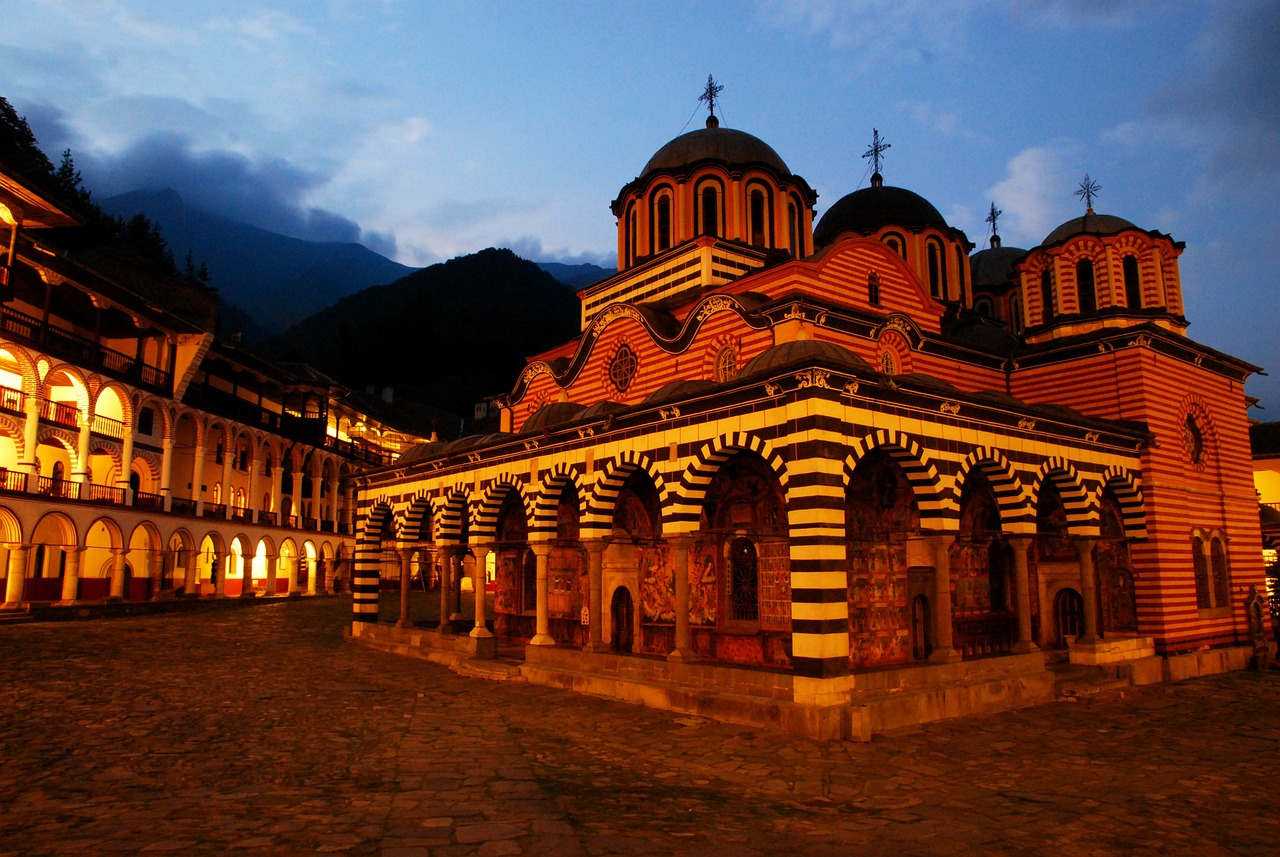 Image by Владимир Игнатов from Pixabay
Image by Владимир Игнатов from Pixabay
15. Wat Pho, Thailand: The Reclining Buddha
Located in Bangkok, Wat Pho's first iteration was built in the 16th century as a late Ayuthaya-period monastery. The temple is famous for its gigantic Reclining Buddha statue, which measures an impressive 46 meters in length. A common public ritual at the temple of the Reclining Buddha is to donate coins in a series of metal bowls placed behind the Buddha statue. Fun fact: temple complex also houses a renowned traditional Thai massage school.
16. Notre Dame Basilica, Canada: A Gothic Wonder
Notre Dame Basilica in Montreal, Canada, is a stunning Gothic Revival masterpiece. Its vibrant stained glass windows and intricate wooden carvings create an ethereal ambiance. Everything, from the great bell in the western tower to the 1891 organ with its 7000 pipes and the stained-glass windows depicting the city’s history, speaks of the strong faith. The basilica has a spectacular interior complete with ornate wood pillars and carvings made entirely by hand, as well as an altar that is backlit in evening-sky blues.
17. The Great Temple of Tenochtitlan, Mexico: Ancient Aztec Grandeur
The Great Temple of Tenochtitlan, now part of Mexico City, was the religious heart of the Aztec capital. It is located in the centre of the city, where the most important ritual and ceremonial activities in Aztec life took place.
Consisting of two stepped pyramids rising side by side on a huge platform, symbolizing two sacred mountains. Though mostly in ruins, its historical significance and archeological finds are awe-inspiring.
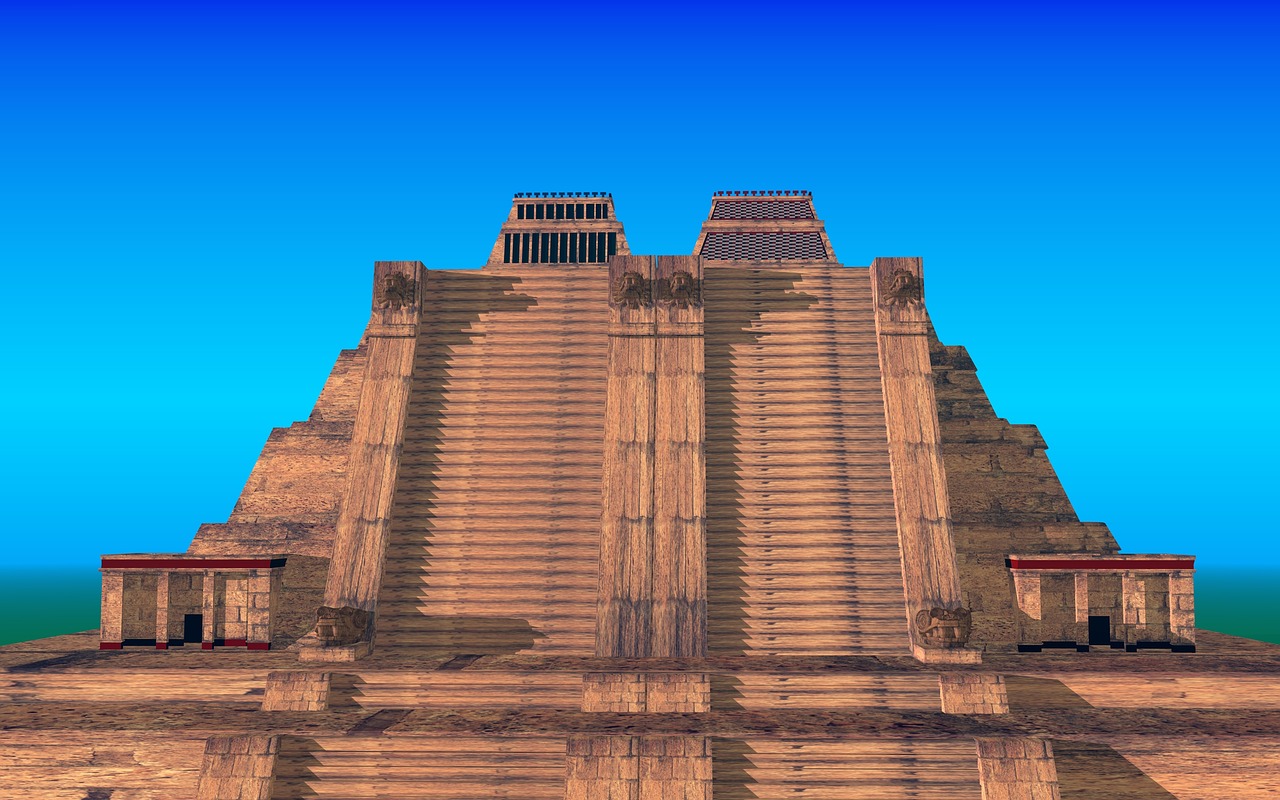 Image by Josué González from Pixabay
Image by Josué González from Pixabay
18. Potala Palace, Tibet: The Abode of the Dalai Lama
Ralung Monastery in Tibet, also known as Potala Palace, is a sacred symbol for Tibetan Buddhists. Perched on a hill, this majestic palace once served as the winter residence of the Dalai Lama. The Potala Palace remains an iconic structure of Tibet and a mecca for Buddhists around the world. Year-round, thousands of religious pilgrims circle the perimeter of the palace with prayer wheels and beads to ask for blessing. Many have travelled thousands of miles by foot just to pay their respects.
19. Sri Ranganathaswamy Temple, India: Spiritual Labyrinth
The Sri Ranganathaswamy Temple in Srirangam, India, is one of the largest functioning Hindu temples globally, with seven concentric enclosures. Its intricate architecture and vibrant festivals beckon visitors from around the world. It is the most illustrious Vaishnava temples in South India, rich in legend and history. Archaeological evidence suggests that its stone inscriptions are from late 100 BCE to 100 CE, making it one of the oldest surviving active temple complexes in South India.
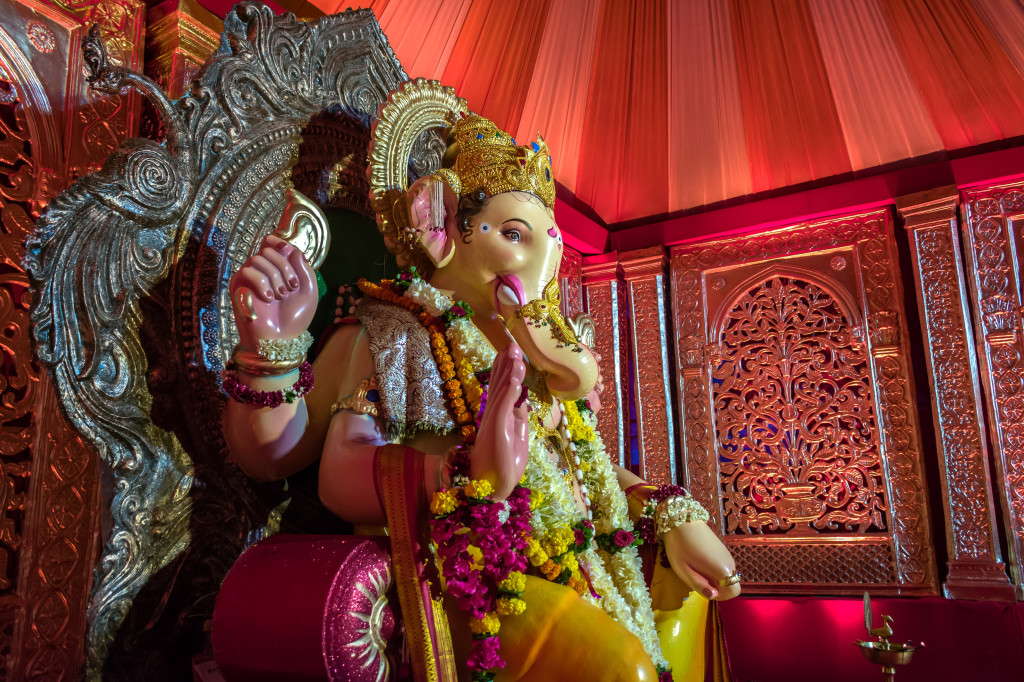 Photo by Sonika Agarwal on Unsplash
Photo by Sonika Agarwal on Unsplash
Embark on this spiritual odyssey and witness the splendour of these magnificent temples, each a testament to human devotion and creativity. Let the sacred energy envelop you as you explore the beauty and significance of these hallowed grounds, leaving you with memories to cherish for a lifetime.


